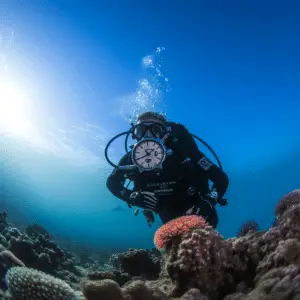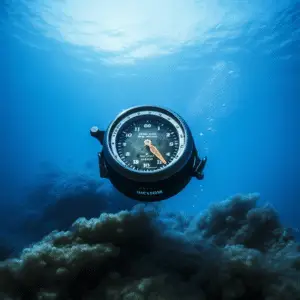Many divers prefer to look at the ocean’s temperature they will be diving in before making the trip. The water temperature affects the dive in a more significant way than you may think. Cooler temperatures reduce the amount of time spent in the water due to your body’s energy to retain some warmth. Checking the ocean temperature should be a part of any pre-planning you conduct before going on a dive. Due to its influence and how you should be aware of the risks of diving in cooler waters, it is essential to consider. Many divers consider snorkeling vs scuba, especially when it comes to visiting significantly colder water bodies. Some oceans are too cold for scuba diving, and snorkeling would be the safer option.
Why Is Ocean Temperature Important?

Ocean temperature is important as it directly affects how long you can stay in the water. If you wish to avoid any divers in the group burning through precious amounts of energy in an attempt to conserve body warmth, then you should stick to oceans that are at a tolerable temperature. If you are not already considering your dive sites’ temperature, you seriously need to change the way you are planning your dives. Particularly with group dives where your planning is needed to ensure that a group of people is safe, it cannot be understated the importance of making sure the water you will be diving in is reasonable.
If you are looking at a particular site but find that it is too cold for diving, I would recommend that you switch things up until the seasons change and the temperature increases. This is one reason why scuba diving is a sport commonly enjoyed in the summer, as you can dive for longer periods of time thanks to the warmer weather. Just because a diving site is too cold at one point in the year doesn’t mean that you will never be able to visit. With some further planning, you can use the seasons to your advantage and visit the site later in the month when temperatures are set to increase slightly. This can be very frustrating but is nothing compared to what could occur if you do not consider all safety factors.
Indian Ocean
The Indian Ocean is the warmest in the world. It is a popular diving spot, especially with tourists and holidaymakers due to its warm temperatures and the fact that it can host an abundance of aquatic wildlife. This hotspot for scuba divers is bordered by Africa, Asia, and Australia, showing why the water is much warmer than what is found in other oceans worldwide. The hotter temperatures and climate make this location a great holiday hot spot, especially for those who wish to take part in diving whilst they are away. This water is suitable for long haul scuba dives as the body uses less energy to keep warm as the waters are not cold enough to have a serious effect. The temperatures within the Indian ocean range from sixty-six to eight two degrees Fahrenheit, so you can be sure that diving in this ocean will be a great experience.
Pacific Ocean
The Pacific ocean has a generally high temperature, with it ranging between seventy and eighty degrees Fahrenheit. As the second warmest ocean in the world, this would be another great location for scuba divers to see the huge variety of ocean life found in the Pacific. Many marine animals are found here, providing sixty percent of the world’s fish in 1996, making it a great tourist location and a popular choice amongst many scuba divers. These temperatures could increase in the summer, meaning that it would be a great place for a long haul drive.
Atlantic Ocean
The Atlantic ocean makes up around twenty percent of the Earth’s surface, making it one of the biggest water bodies on this list. This ocean is heavily influenced by the seasons and the weather, with temperatures reaching highs of eighty-four degrees Fahrenheit but having the potential to drop to twenty-eight degrees Fahrenheit during the winter months. This ocean will require much planning before you go on a dive. It goes without saying that it would be better to dive here when the climate is a little warmer. During the summer months, this ocean would be a great diving spot. Still, you should seriously consider the safety implications involved if you wish to dive here when the temperature is lower.
Southern Ocean

The Southern Ocean is located near the Antarctic, which means that the waters’ temperature is freezing and not suitable for diving or snorkeling over long periods. Diving in these waters can be hazardous as the cold temperature can have a rapid damaging effect on the body. If you are set on dicing in this location, you should be prepared for waters ranging from twenty-eight degrees to fifty Fahrenheit. You should be fully equipped with a body heat conserving wetsuit and the best snorkel vest so that you have layers and will lose body heat at a much slower rate.
Arctic Ocean
As you can probably tell from the name, the Arctic ocean is the coldest in our world, with temperatures of an average of twenty-eight degrees Fahrenheit. Diving here should be taken very seriously as although it is a great life experience, it can be perilous. It would be best if you took things slowly and not venture too far down in these waters as you can rapidly lose your body heat in a matter of minutes.
